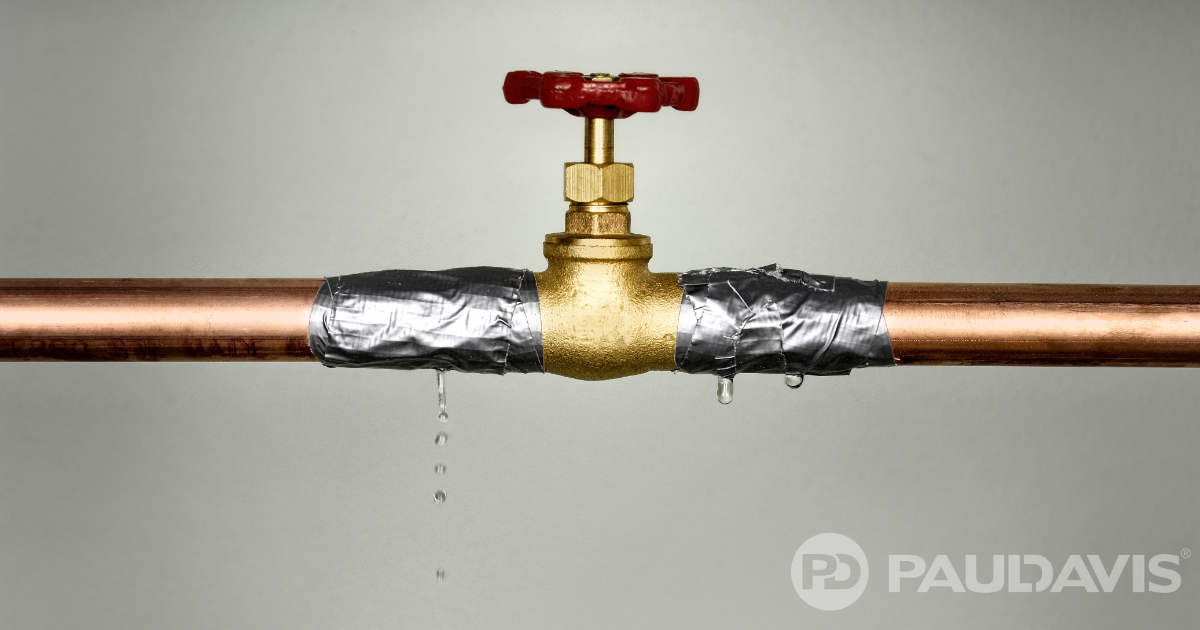
The puddle next to the baseboard in the main corridor was mysterious but the maintenance crew didn’t worry about it. Perhaps an employee spilled something. But mopping up the same splotch seven days in a row? That was more than a curiosity. As they pondered the source, a wet clue literally hit them on the head. Mystery solved: a supply line above the dropped ceiling had sprung a pinhole leak.
“Water damage can be subtle and insidious,” warns Mickey McHenry, President of Paul Davis of South Atlanta. “Even tiny leaks eventually create big problems – once the maintenance crew looked up, they noticed water staining on the ceiling tile. In sum, it pays to heed warning signs. Don’t ignore or discount your nagging worry, dig deeper.”
If you find yourself asking the following questions, McHenry advises, search for answers.
What happened to that wall/step/ceiling? Stains, discoloration, delaminating, crumbling or peeling paint on surfaces could indicate a hidden leak.
Why did I trip there? Uneven areas on floors may indicate that moisture is swelling the subfloor. This problem poses a slip, trip and fall safety hazard to building occupants, too.
Who spilled something? Seeing an actual puddle is a certain warning sign. However, be alert for areas on walls and floors that are cooler to the touch than surrounding areas, or feel moist. Temperature measuring devices are very helpful when sleuthing moisture infiltration.
What smells bad? Mouldy or damp smells are never normal in buildings and homes. Pay particular attention if odours increase after rain or humid spells.
Why do I hear dripping? If you hear water running or dripping when fixtures aren’t in use and building systems like hot water heaters are not drawing water, investigate the reason. Track when the noises occur: dripping during and after rainstorms may indicate gutter or roofing leaks.
Why is the water bill so high? If the water bill increases suddenly for unknown reasons, call a plumbing professional to search for hidden leaks. One homeowner eventually traced his excessive bill to a toilet’s worn-out tank gasket.
“The truth is that most leaks in commercial and residential structures stem from five common sources: plumbing fixtures, supply lines and hoses, water heaters, drains, and building components like roofs and windows,” McHenry says. “We’re here to help, ready to help find your leak or repair the water damage that results.”
